Who invented the Canal Lock
When you think of Leonardo da Vinci, your mind likely darts to his remarkable contributions to the world of art – masterpieces like ‘The Last Supper‘ and ‘Mona Lisa‘. But what if we told you that da Vinci’s genius extended beyond his paintbrush, playing a significant role in shaping a critical piece of our modern navigation system – the Canal Lock?
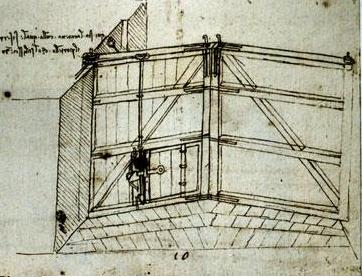
Leonardo da Vinci Canal Lock
In this article, we dive deep into the workings of canal locks, Leonardo da Vinci Canal Lock, the unique mechanisms that make our waterways navigable, and explore the profound influence of da Vinci’s designs on their development.
I. Decoding the Mechanics of Canal Locks
Before we delve into Leonardo’s impact, it’s important to grasp the mechanics of the canal lock. But what exactly are canal locks, and How does a canal lock work?
I) Canal Lock Operation System
Simply put, canal locks are water-filled chambers which serve as elevators for boats. They allow vessels to traverse changes in water levels in our rivers and canals. The process may sound complicated, but it follows a basic yet ingenious step-by-step principle:
- A boat enters the lock, which is filled to match the level of the waterway from which the boat is coming.
- The gates close behind the boat, sealing it within the chamber.
- If the boat is going upstream, water is let into the chamber through valves, causing the boat to rise. If the boat is going downstream, water is let out of the chamber, causing the boat to lower.
- Once the water level in the lock matches the level of the waterway the boat is moving to, the gates at the other end of the lock open, and the boat continues its journey.
II. The Birth of Canal Locks
I) The Maiden Lock and Its Conception
The first lock dates back to the 3rd century BC in Ancient Greece at a place called Palaipaphos (modern Kouklia). It was a simple, yet effective design, using a single gate and a sluice system.
II) Who invented the canal lock? when was the canal lock invented?
- In the year 983 AD in China, an engineer named Chiao Wei-Yo introduced a novel idea.
- His concept involved positioning two barriers a short distance apart.
- This arrangement created a calm water pound or basin between the two barriers.
- The water in this pound could be filled or emptied at will, offering complete control over its level.
- Despite the water’s one-way flow, his design allowed boats to travel both downstream and upstream.
III. Leonardo da Vinci’s Revolutionary Canal Lock Design
Leonardo da Vinci, the renowned polymath, was not only an artist but also an innovative inventor. One area where his inventive genius shone was in the design and development of canal locks.
I) Distinguishing Leonardo’s Canal Lock from Predecessors
Da Vinci canal lock design was distinctly different from those that came before. It showcased his unique ability to analyze a problem and come up with a more efficient solution.
His canal lock was a “miter lock,” named for its two gates that met at an angle like a miter joint in carpentry. This design was a departure from the straight-gated locks that were common in his time. This miter lock canal design allowed for a stronger seal as the water pressure itself forced the gates together. This marked a significant step forward in the efficiency and reliability of canal locks.
II) Application of da Vinci’s Canals
His canal lock designs were utilized in several famous canals, such as the Martesana Canal in Italy. This canal, among others, shows Leonardo’s engineering prowess and the practical application of his miter lock design. His influence extended far beyond Italy, eventually becoming a standard in canal engineering worldwide. The adoption of his design marked a turning point in the development of effective water navigation systems.
IV. The World’s Most Renowned and Colossal Canal Locks
I) Berendrecht Lock
One of the most recognized canal locks worldwide is the Berendrecht Lock. This lock is not only famous for its location in Antwerp, Belgium, a city known for its rich history and spectacular architecture but also for its innovative design.
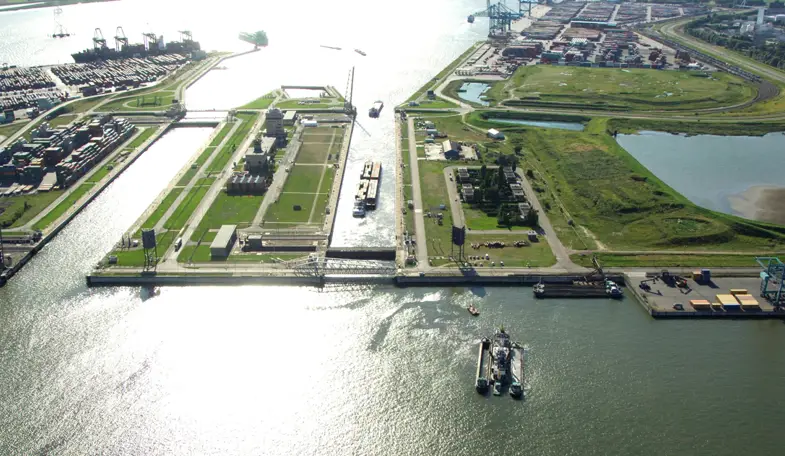
Berendrecht Lock, Belgium
The Berendrecht Lock was designed to accommodate the largest sea-going vessels and as a result, stands as an epitome of incredible engineering. It shows advanced lock technology that makes it a marvel of modern engineering and a significant achievement in water navigation.
II) Location of the World’s Largest Canal Lock
The Three Gorges Dam Ship Lift lock in China represents a marvel of engineering ingenuity. With its vertical design, it allows ships to ascend and descend an impressive 113 meters in the Yangtze River. Unlike traditional locks, it uses a ‘ship elevator’ approach to move vessels vertically in a contained water body. This method significantly reduces the time it takes for a ship to traverse the height difference.
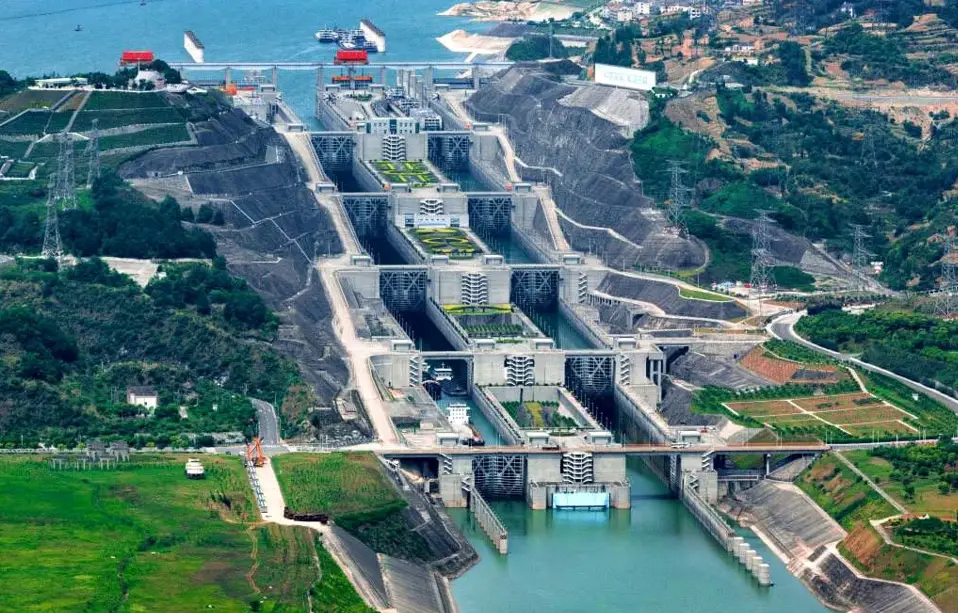
Three Gorges Dam Ship Lift lock, China
This colossal lock and its innovative design have made the Three Gorges Dam an essential part of global shipping routes, making it a fitting symbol of China’s significant contributions to modern canal engineering.
V. Profound Influence of Canal Locks on River Navigation and Trade
I) Role of Locks in River and Canal Systems
Canal locks play an integral role in our waterways, yet their importance often goes unappreciated. Fundamentally, these innovative contrivances enable ships to smoothly traverse the varying elevations along rivers and canals. Acting as water elevators, they are able to lift and lower vessels by manipulating water levels within enclosed chambers.
II) Advantages Canal Locks Offer to Navigation and Commerce
Besides aiding in navigation, canal locks have significantly bolstered trade and commerce. Here’s how:
- Streamlined Shipping: Canal locks make the movement of goods faster and more efficient. By allowing ships to bypass difficult and lengthy routes around geographical obstacles, they enable a swift and direct path between commercial hotspots.
- Cost Efficiency: By facilitating direct routes, canal locks help reduce fuel consumption and overall shipping costs, which can ultimately lead to lower prices for consumers.
- Global Connectivity: Canal locks have transformed isolated regions into bustling commercial hubs, fostering economic growth and global connectivity.
VI. Da Vinci’s Impact on Today’s Miter Locks
Da Vinci’s innovative design laid the groundwork for the modern miter locks we see today. He was the first to introduce the miter gate – a pair of gates meeting at an angle, mirroring a ‘V’ shape, that close against the water pressure. This design not only required less force to operate but also utilized the water pressure to ensure a tighter seal, a principle that still holds true today.
I) Miter Locks in Today’s Canal Infrastructure
The design of miter locks today owes a significant debt to da Vinci’s early work. His invention revolutionized the way we manage water transport and navigate through waterways with differing levels. Modern-day miter locks, albeit more complex and mechanized, essentially adhere to the same principle established by da Vinci centuries ago.
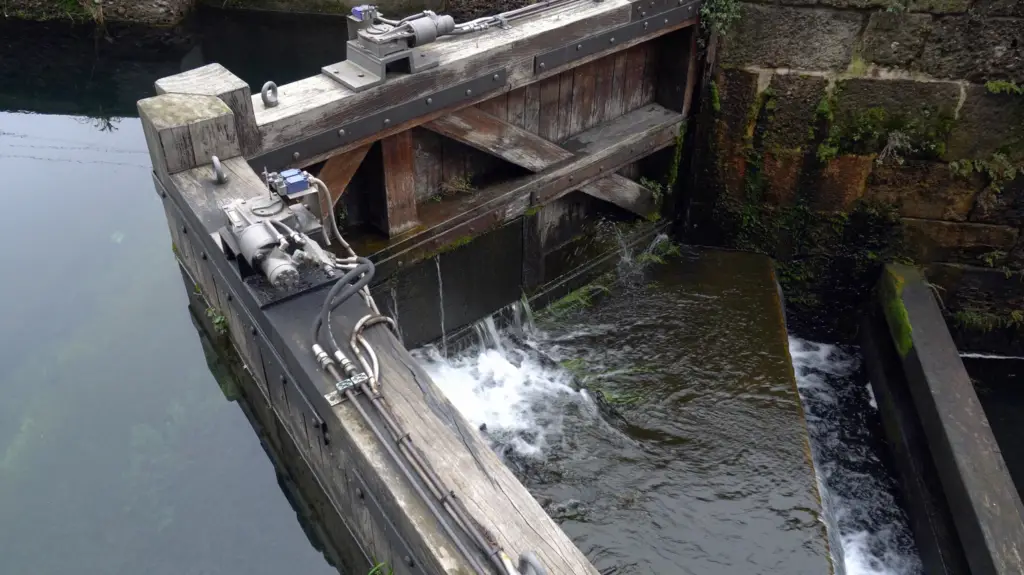
Leonardo da Vinci Canal lock – Milan, Italy
VII. Da Vinci’s Influence on the Panama Canal
The Panama Canal, one of the most critical shipping routes in the world, illustrates the influence of da Vinci’s work. This vital waterway, connecting the Atlantic and Pacific Oceans, relies heavily on a system of locks. They are the backbone of the canal’s functionality, enabling it to handle massive vessels carrying enormous amounts of cargo. Without da Vinci’s pioneering work in lock design, a marvel like the Panama Canal may not have been possible.
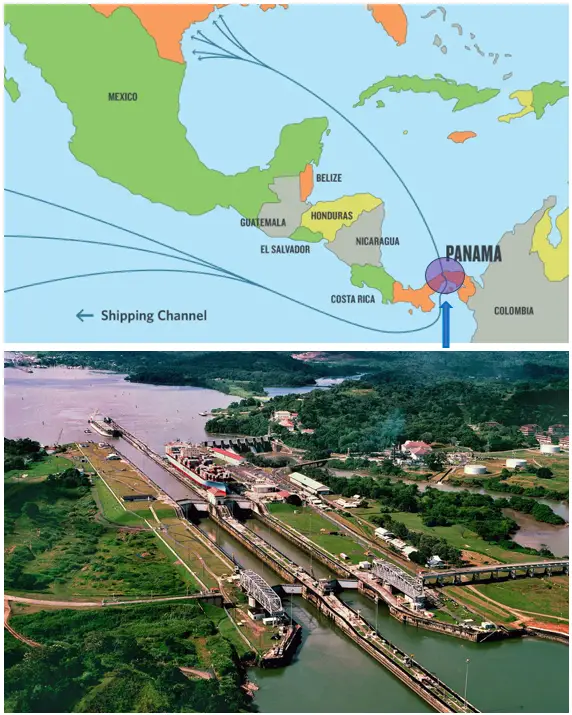
Panama canal (blue circle location followed by the blue arrow), Panama
Leonardo da Vinci’s influence is indeed a testament to the timeless nature of true innovation. Even centuries after his passing, his ingenious engineering continues to drive our world forward.
Conclusion
Da Vinci’s unique miter lock design revolutionized the way water levels could be manipulated, providing a more secure and efficient means of moving vessels through waterways of varying heights. This pioneering design has been incorporated into countless canal systems around the world, a testament to da Vinci’s enduring influence.
From enabling more efficient water transportation and facilitating global trade, to influencing modern engineering marvels like the Panama Canal, canal locks and the contribution of da Vinci to their evolution remain as relevant as ever. As we sail into the future, the impact of canal locks on our society will continue to resonate, echoing the brilliance of innovators like Leonardo da Vinci.
The canal lock is just one more example of how revolutionary Leonardo was, and another example of an invention of his that has survived the test of time long after its inventor, therefore, almost making the man himself immortal.






